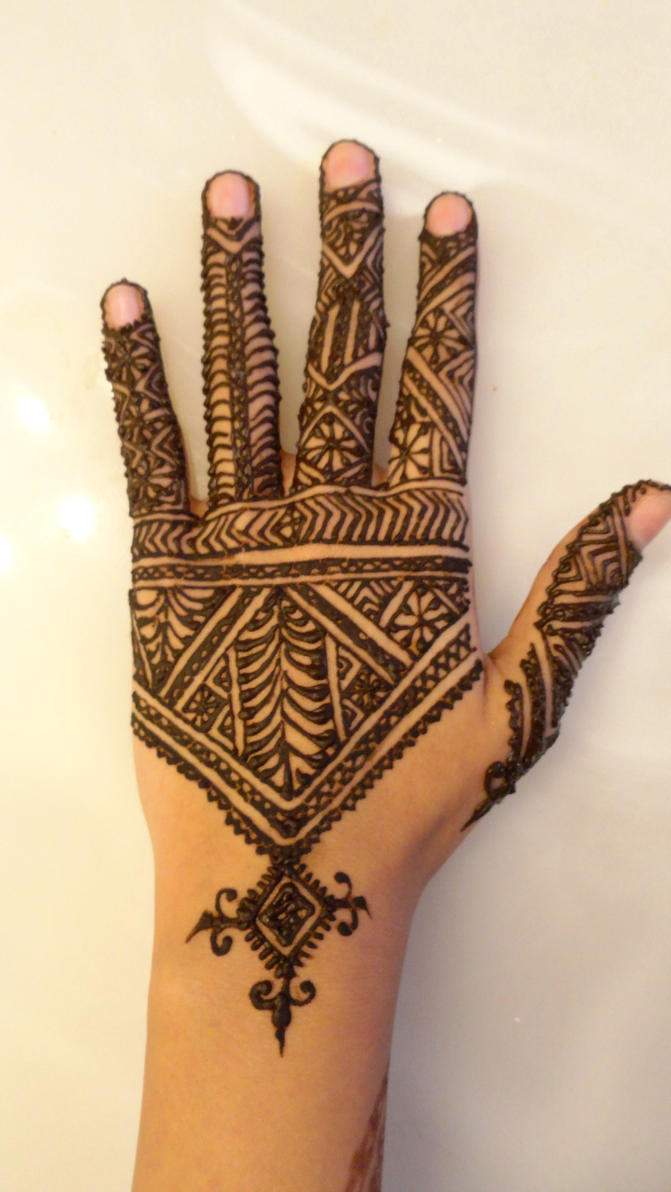Henna is undoubtedly an important element of Moroccan female culture. For any big celebration such as a wedding or traveling to visit family and friends, women receive henna as a symbol of good health and good luck. Every time that I have left the country, I have remarked about the great majority of Moroccan women standing alongside me in queues for ticket counters and to board airplanes that have freshly done henna on their hands and often on their feet as well. I am immediately struck by the pride these women with meticulously decorated hands and feet carry with them - about where they came from and where they are going. I see the henna and I think of the time that it took, who did it, and who was there. If she’s traveling alone, I think of who saw her off at the airport and who is waiting for her at her destination. Henna signifies the excitement in taking a new step, be it traveling, moving, getting engaged, or getting married, and also the support and love that friends and family give to her for taking such a step.
Just like language, cuisine, culture, and fashion varies from region to region, henna is no exception to this rule.
| Rabati-style henna done during my semester abroad in Rabat during the Spring of 2010. In my experience, Rabati-style henna is known for its floral designs. Notice the leaf-like motif on our hands? |
 |
| This is an example of Fessi-style henna (from Fez). |
This was my last week in Rabat before I went back home to spend the holidays. As a self-proclaimed Rabat local, I felt that it was only fair to get my hands done before my departure. The opportunity arose on Tuesday night when a homestay family of one of the students from my study abroad organization organized a mock-Moroccan wedding/henna party open to all students and guests. On Tuesday night around 9 pm two friends and I met at the medina wall and found our way to the house where the event was taking place. The inside of the house was absolutely breathtaking. After passing through a large and intimidating front door and dark hallway, a beautiful open tiled courtyard opened up before us surrounded by traditional Moroccan salons. Music was playing, cookies and tea were placed about, and many of the students had already arrived and were getting dressed in beautiful Moroccan caftans. Caftans are the traditional outfit for Moroccan women to wear at various celebrations. It is essentially an ornately decorated tunic shaped dress that is cinched at the waist by a large and often glittery belt.
The homestay mother who threw this going away party of sorts is known throughout the medina was the wedding dresser. If you are having your wedding in the Rabat medina or will be attending one, she rents out dresses, jewels, and accessories from her home. When her daughter returned home from work around 10 pm, henna began. A tray was brought out from the kitchen with napkins, a syringe, medical gloves, and a bowl of something resembling Nutella hazelnut spread but smelling more like an old musty cedar closet. I placed my hands on a pillow and the daughter began to freehand designs on the tops and undersides of my hands. A friend of mine who accompanied me is on a Watson Fellowship, which means that she is spending 12 months traveling outside the United States while conducting research. Before Morocco, she had spent time in India where she got henna done in the local style. She noticed many differences between the two applications, but there were two that stood out to her. First, she said that the color was different. Indian henna is much darker with either a red or black hue, while Moroccan is a soft orange-brown. She also said that the Moroccan Rabati-style was much more delicate than the Indian henna she received. The designs were looser and more floral while her Indian henna designs were much busier.
Within a matter of minutes, our hands were covered. I left the party daintily holding 20 dirhams for my cab ride home with the tips of my fingers in an attempt to not smudge my partially-dried henna. When I woke up the next morning, I brushed off the remaining dried bits of henna off of my hands to reveal a beautiful design. I can't wait to travel back home in style, à la marocaine. B’shaourahah!
Within a matter of minutes, our hands were covered. I left the party daintily holding 20 dirhams for my cab ride home with the tips of my fingers in an attempt to not smudge my partially-dried henna. When I woke up the next morning, I brushed off the remaining dried bits of henna off of my hands to reveal a beautiful design. I can't wait to travel back home in style, à la marocaine. B’shaourahah!







No comments:
Post a Comment